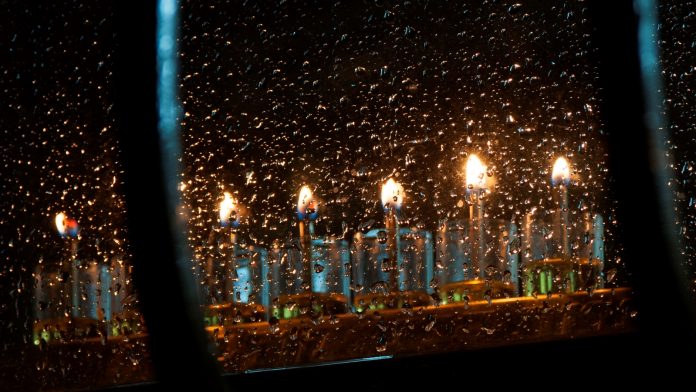Courtesy Israel21C
Photo and story by Yehoshua Halevi
One of the unusual architectural features found in the outside walls of many Israeli homes is a small, glass-covered enclosure prominently located next to the front door.
Designed to shelter the interior from wind and rain, these peculiar stone cubicles lay idle most of the year, springing to life for exactly eight days beginning on 25 Kislev on the Jewish calendar, the first night of Hanukkah.
It’s an ideal location to place the menorah in adherence with the custom of pirsumay nisa, publicising the Hanukkah miracle, when the oil burned for eight days instead of one during the rededication of the second Jewish temple in 165 BCE.
This custom is widely observed in Israel and Jewish communities around the world. For eight consecutive nights, the illuminated menorah (chanukiyah) is placed at one’s doorstep, gate or inside a large picture window facing the street where it can be seen by passers-by.
The public display of chanukiyot turns the Festival of Light into a spectacle of sight. Many families have the custom of each member lighting his or her own menorah, and it is not uncommon to see seven or eight menorahs glowing brightly in a window or glass case outside the home.
The best places to view chanukiyot are the observant neighbourhoods beginning right after sundown, when most residents do the lighting ceremony.
In Jerusalem, the Jewish Quarter of the Old City, Mea She’arim, Geula and Nachla’ot are excellent destinations to view many unique chanukiyot in full view to the public. The Jewish Quarter has become a popular destination, especially on the eighth night, with some residents offering hot drinks, stories and explanations of their distinctive menorahs.
For a more enlightening treat of the holiday’s visual delights, visit a hotel lobby where guests often light candles on a single table in the lobby and one can gaze at a dozen or more menorahs ablaze simultaneously.
A winter stroll is also likely to generate a little appetite, but not to worry. The metaphor of the oil outlasting its normal expectancy has seeped into other traditions of the holiday, such as eating foods fried in oil.
In Israel, donuts are not generally consumed year round, but on Hanukkah, bakers become artists and genially compete to see who can design the most colourful and scrumptious sufganiyot. The quantity and variety of donuts are sure to please any palate and, along with the flickering oil lamps and candles, shed a little light and warmth on a long winter night.









